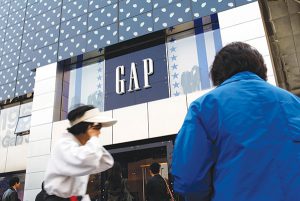Bloomberg
Big retailers rushed to build up inventories last year amid soaring consumer demand and transportation bottlenecks — going so far in some cases as to rent their own cargo ships. Now, they’re trying to figure out how to sell all their stuff.
Inventories rose $44.8 billion for companies on S&P consumer indexes with a market value of at least $1 billion that reported earnings over the last two weeks, according to data compiled by Bloomberg. That’s up 26% from this time last year. The glut dented profits at some retailers, with Walmart Inc paying more for storage and Target Corp and Gap Inc cutting prices on key goods.
It’s far from clear what comes next. In the past, ballooning retail inventories have signalled economic slowdowns or recessions as shoppers bought less. But consumer spending in April climbed at the quickest pace in three months after adjusting for inflation, the Commerce Department said. As long as Americans keep shopping, well-stocked warehouses could buoy retailers if port congestion worsens this summer.
“The just-in-time mentality is broken now,†said Jen Bartashus, a retail analyst at Bloomberg Intelligence. “So you’re seeing retailers carry more inventory than they traditionally carried.â€
Economists expected money allocated towards services would outpace merchandise as pandemic concerns subsided, but both categories have continued to move upward.
Inflation-adjusted spending on services increased 0.5% in April from the prior month while goods rose 1%.
While that leaves plenty of demand for retailers, consumer tastes are changing. At Macy’s Inc, shoppers spent more on back-to-work apparel and clothing for special occasions, instead of on the leisurewear and home goods that were popular earlier in the pandemic. The sharper-than-expected shift left the company with a glut of merchandise that consumers didn’t want.
That means Macy’s will have to cut prices in slower categories to make room for in-demand items. Target, which recorded a 43% jump in inventory, is in the same boat, as are Gap Inc and Abercrombie & Fitch Co Walmart Chief Executive Officer Doug McMillon told analysts he was glad inventory was higher, while acknowledging that the 32% increase in the first quarter “is higher than we want.â€
 The Gulf Time Newspaper One of the finest business newspapers in the UAE brought to you by our professional writers and editors.
The Gulf Time Newspaper One of the finest business newspapers in the UAE brought to you by our professional writers and editors.
